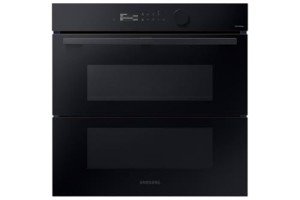5 Self Cleaning Oven Technology Myths You Should Stay Clear Of

Understanding Self-Cleaning Oven Technology
In modern-day cooking areas, convenience often reigns supreme, and one of the most innovative appliances that exhibits this pattern is the self-cleaning oven. Self-cleaning ovens can save users significant energy and time when it comes to cooking maintenance. From comprehending the underlying technology to acknowledging the benefits and potential downsides, this post provides a detailed overview of self-cleaning oven technology.
What is a Self-Cleaning Oven?
A self-cleaning oven is designed to clean its interior without the requirement for manual scrubbing and making use of chemical cleaners. Self Cleaning Oven Efficiency runs in two primary methods: through high-temperature pyrolytic cleaning or by utilizing steam. Both techniques intend to simplify the cleaning process while guaranteeing that the oven remains hygienic and devoid of food residues.
How Does Self-Cleaning Work?
Pyrolytic Cleaning:
- This approach warms the oven to temperature levels reaching around 900 ° F(482 ° C ). At this severe heat, food particles, grease, and other residues burn away, becoming ash. Once the cleaning cycle is complete, users can just clean away the ash with a moist cloth.
Steam Cleaning:
- In contrast, steam cleaning runs at lower temperatures, utilizing water to develop steam. The steam helps to loosen up food particle and grease, making it easier to clean the interior clean.
Both options have their own advantages and drawbacks, making it vital for clients to choose based upon their specific needs.
Advantages of Self-Cleaning Ovens
Self-cleaning ovens present numerous benefits:
- Convenience: The primary advantage of self-cleaning ovens is the convenience they offer. With a self-cleaning function, users no longer need to spend hours scrubbing the oven on hands and knees after heavy cooking.
- Time-saving: The self-cleaning operation normally lasts a couple of hours, throughout which users can focus on other tasks in the kitchen or their home.
- Sanitary Cooking Space: Self-cleaning ovens can effectively lower bacteria and germs by reaching such high temperature levels.
- Minimized Chemical Usage: Many users choose self-cleaning features to prevent chemicals often found in conventional oven cleaners, making it a greener option.
Prospective Disadvantages
Nevertheless, self-cleaning ovens are not without their disadvantages:
- Heat and Energy Consumption: The pyrolytic cleaning approach can take in a substantial amount of energy and generate a great deal of heat, which might make kitchen areas uneasy throughout the cycle.
- Time Requirement: Although the cleaning process is simpler, it is still lengthy, which might not suit users who desire to clean their ovens rapidly.
- Use and Tear: The heats associated with pyrolytic cleaning can potentially damage oven elements with time if the oven is not correctly created.
Considerations When Choosing a Self-Cleaning Oven
When selecting a self-cleaning oven, there are numerous elements to consider:
- Type of Cleaning Technology: Choose in between pyrolytic and steam cleaning based upon individual choices and cooking practices.
- Size and Capacity: Ensure that the oven fits into the kitchen space while also meeting cooking needs.
- Brand and Model Reviews: Research different brands and models to discover customer reviews that can provide an idea of reliability and cleaning efficacy.
- User-Friendly Features: Look for extra features that boost the cooking experience, such as smart technology, additional cooking modes, and ease of access to controls.
Often Asked Questions (FAQs)
What is the common duration of a cleaning cycle in a self-cleaning oven?
The cleaning cycle can range from 1.5 hours to over 3 hours, depending upon the level of cleaning required and the specific oven model.
Can I stop briefly or disrupt a self-cleaning cycle?
It is generally not advised to disrupt a cleaning cycle since it might cause issues. It's best to enable the cycle to run its full duration.
Is it safe to utilize the oven while it is in self-cleaning mode?
No, it is vital to prevent utilizing the oven during the self-cleaning cycle due to the severe heat included.
Are self-cleaning ovens tough to keep?
While the self-cleaning function considerably decreases the need for manual cleaning, users still need to perform routine maintenance to keep the oven in great working order, including inspecting seals and ensuring vents are clear.
Can self-cleaning ovens clean every kind of spill?
Self-cleaning ovens are designed for most types of food spills, however specific heavy or burnt-on residues may need pre-treatment or a manual clean in addition to self-cleaning.
In summary, self-cleaning oven technology represents a substantial leap in cooking area convenience, allowing home cooks to preserve health with very little effort. While they come with both benefits and disadvantages, understanding how self-cleaning ovens work can assist consumers make notified options that cater to their cooking practices and preferences. Whether it's conserving time or reducing making use of extreme chemicals, self-cleaning ovens could act as an important addition to modern-day cooking spaces.
By considering their needs and choices, users can choose the ideal self-cleaning oven that makes the cooking and clean-up process easier and more efficient.

